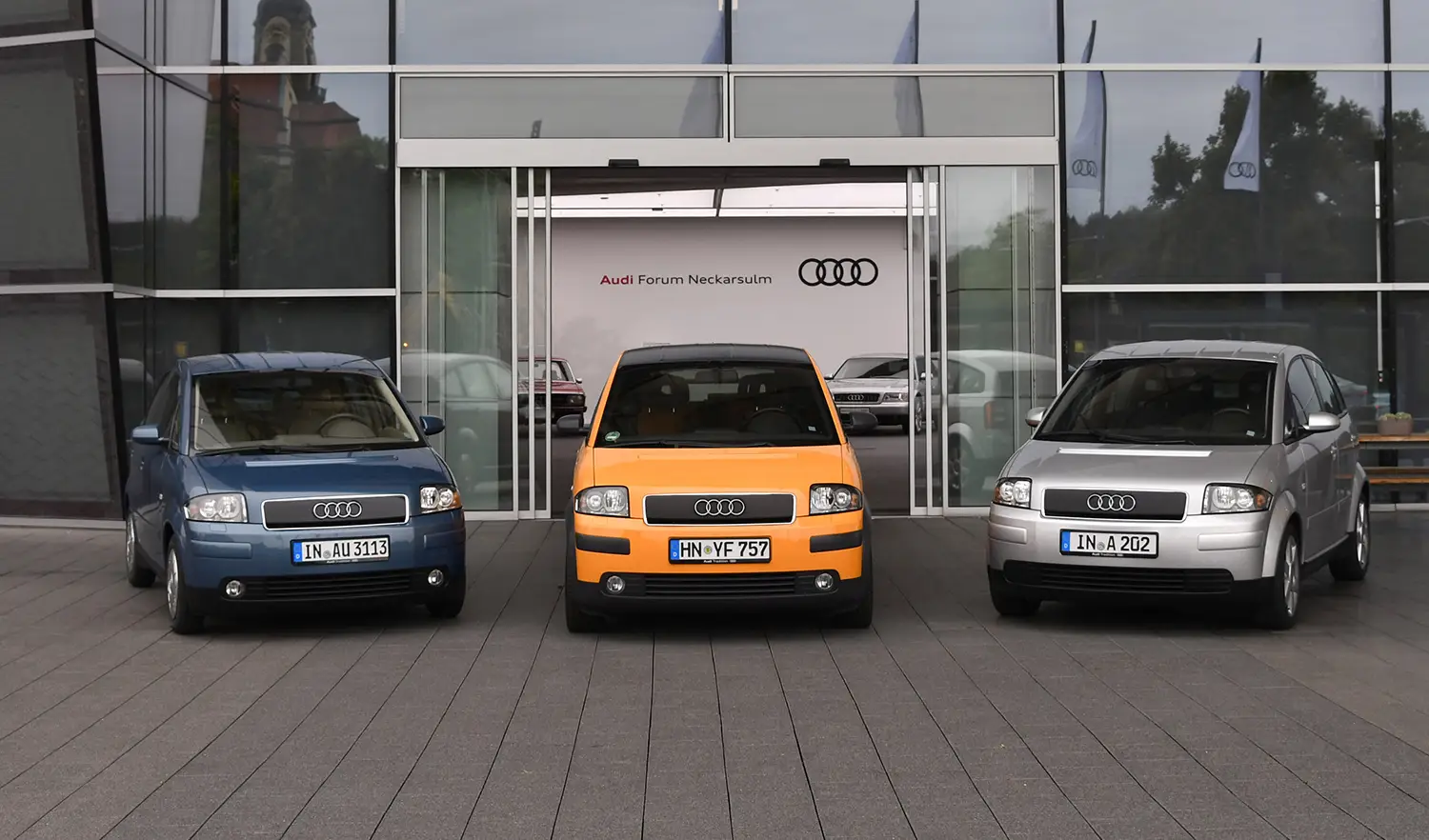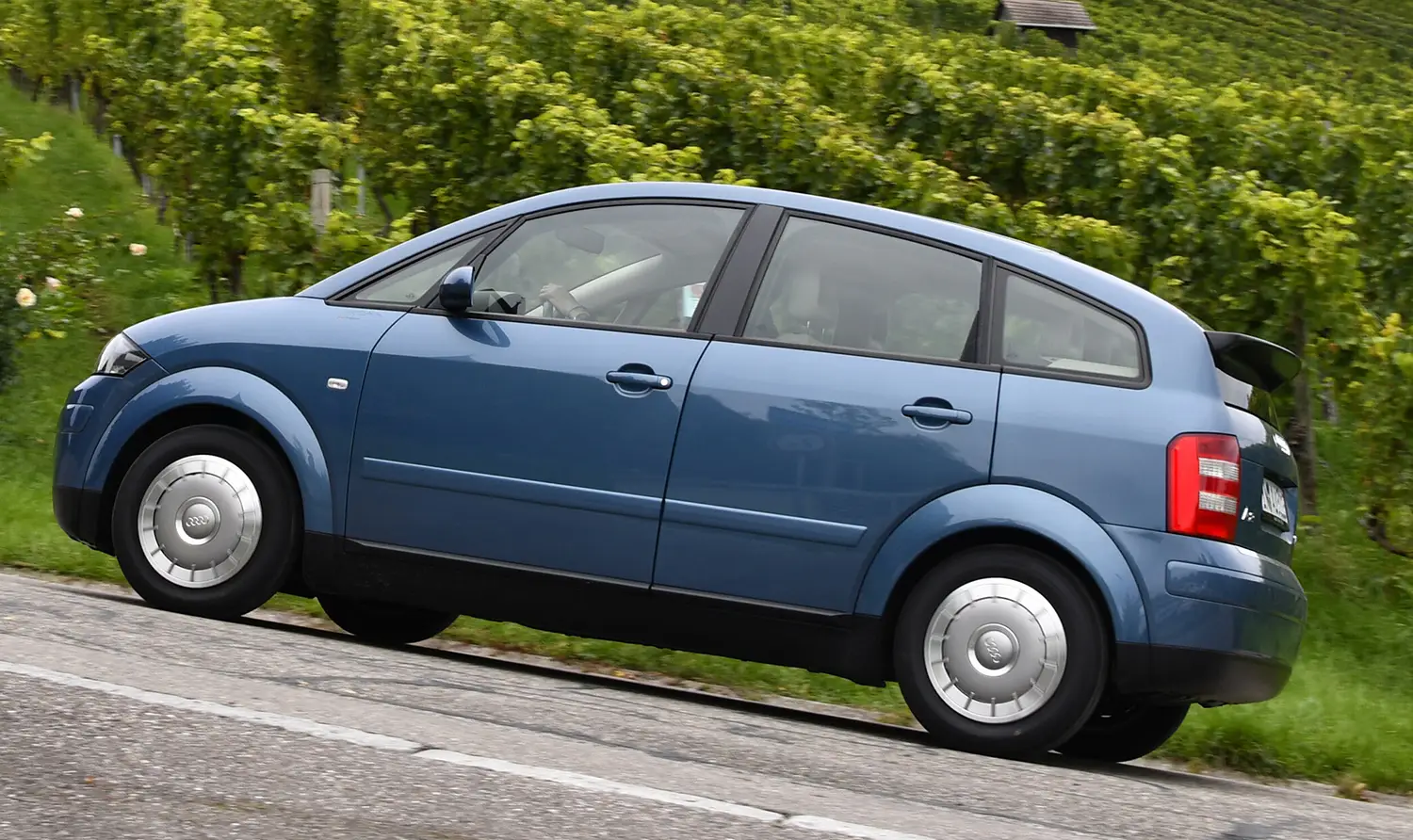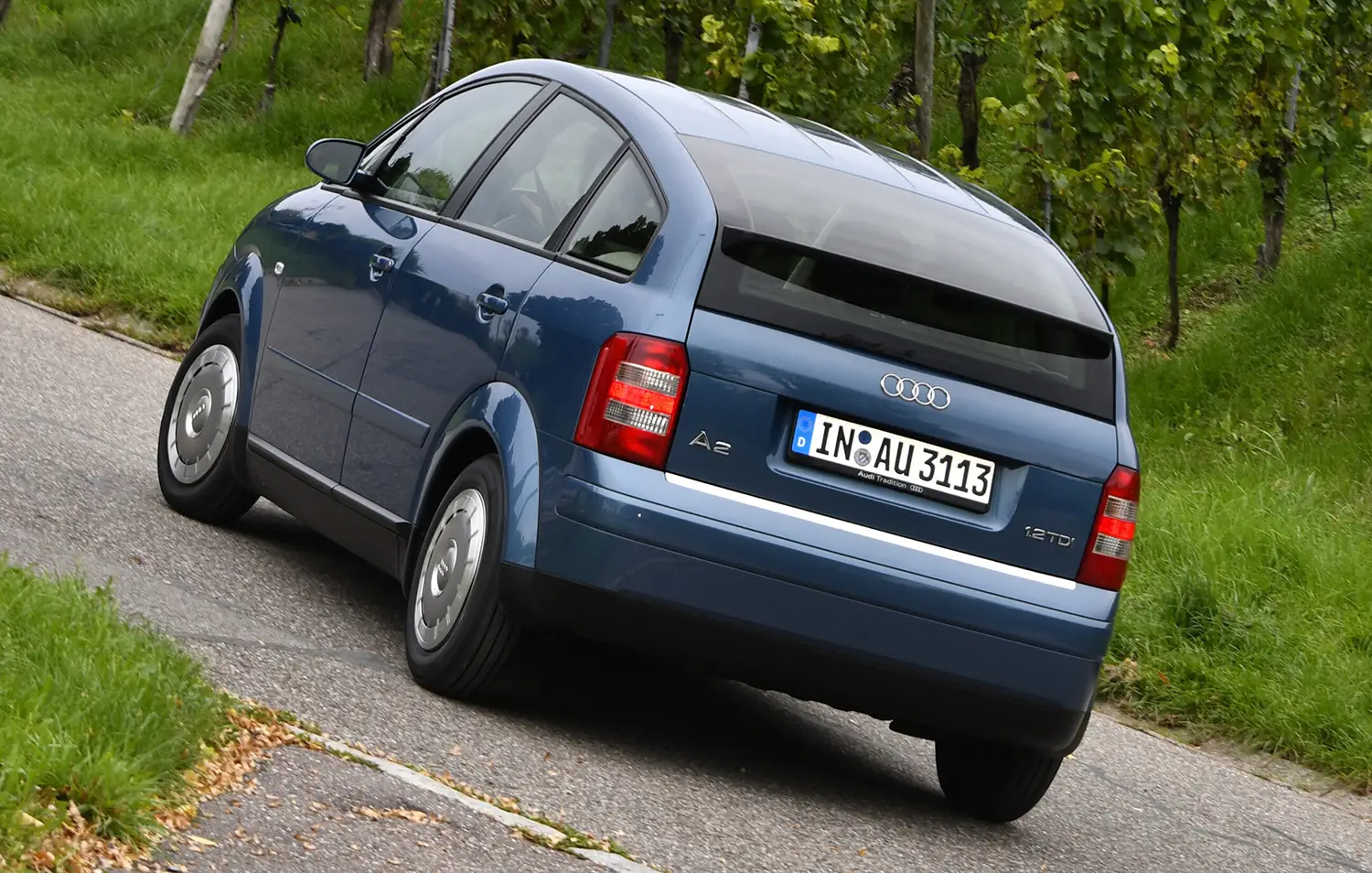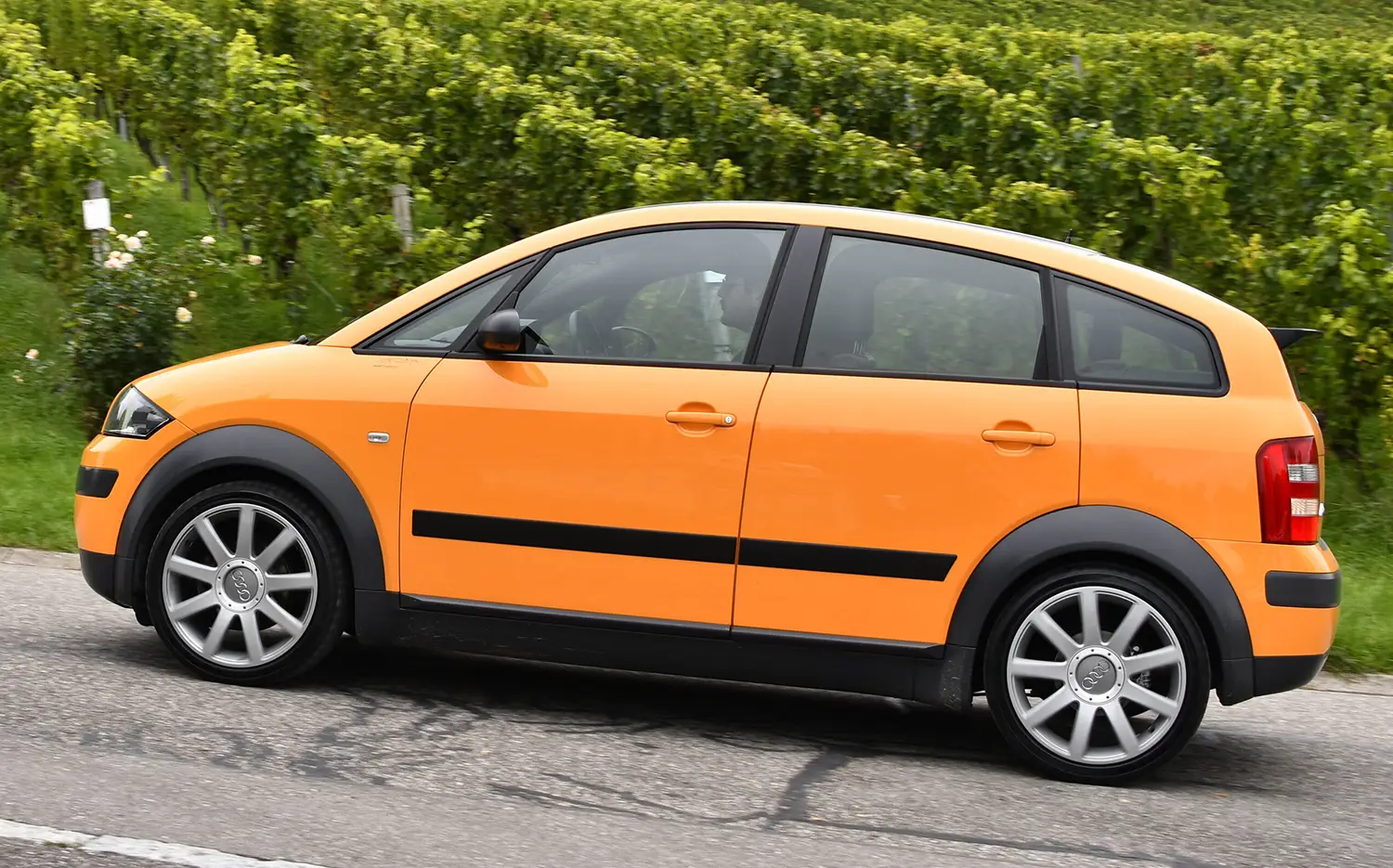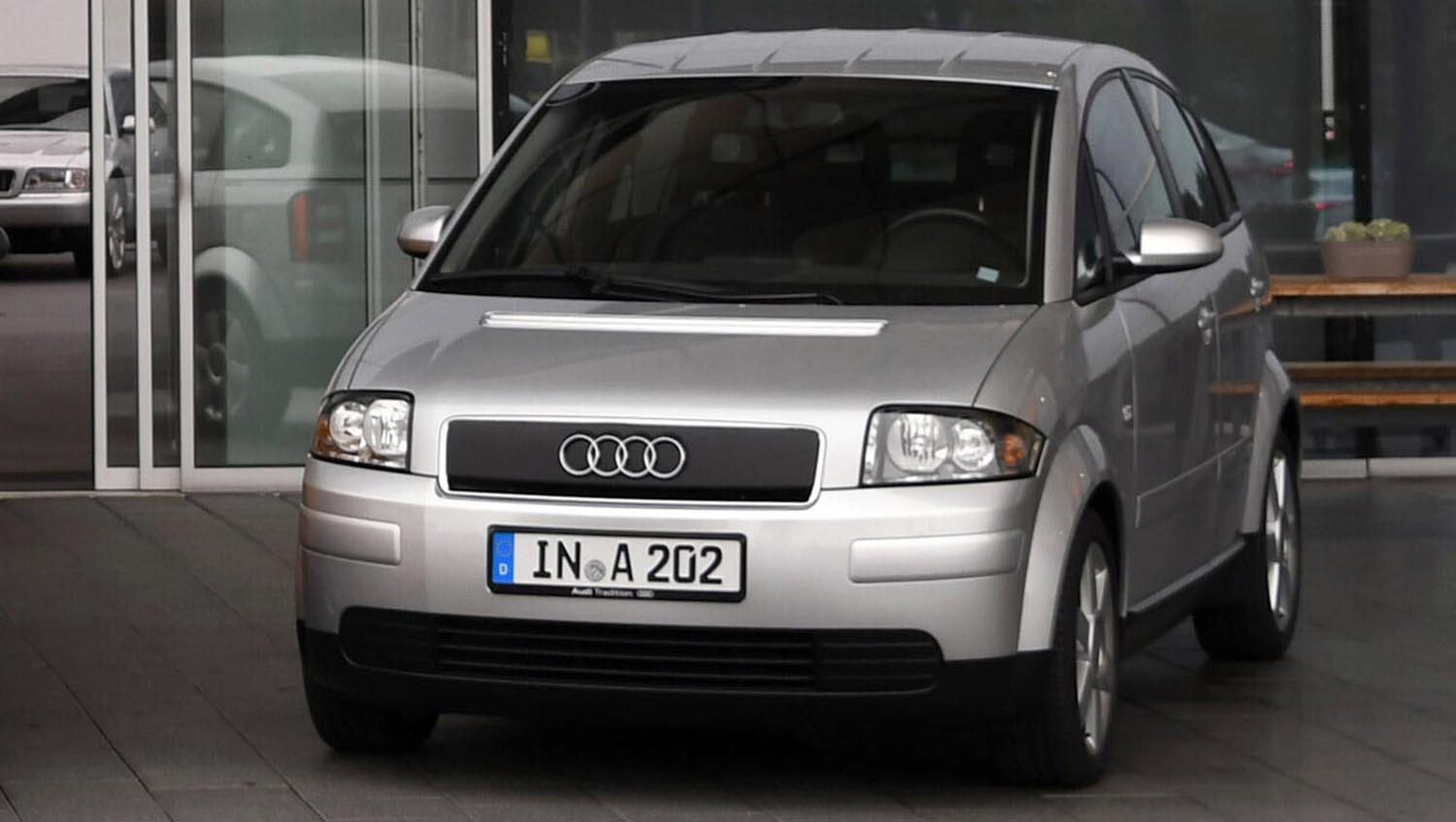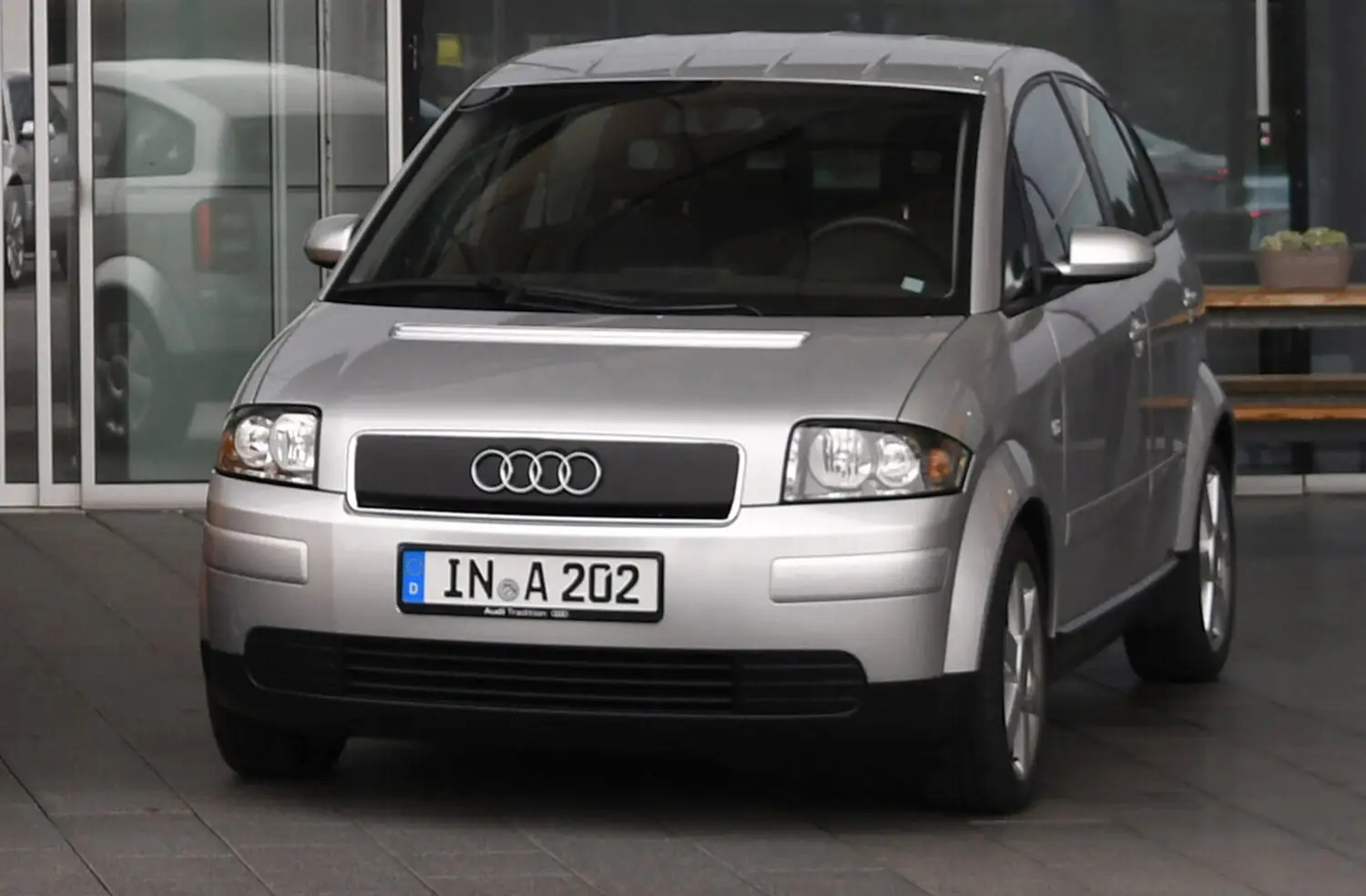
The Audi A2 launched 25 years ago, shaking up the compact car segment with its lightweight aluminum construction and efficient design. Known for its innovative approach, the Audi A2 combined aerodynamic styling with practical interior space, capturing attention across Europe.
Development and Concept Origins
Audi began planning a three-liter car in the early 1990s, with the first work starting shortly after. Designers in Ingolstadt collaborated closely with aluminum specialists in Neckarsulm. In May 1995, they revealed the concept study “Ringo,” which already featured the aluminum Space Frame (ASF) technology later used in the production A2. Exterior design was led by Luc Donckerwolke, with interior work from Stefan Sielaff, shaping a compact yet efficient interior layout.
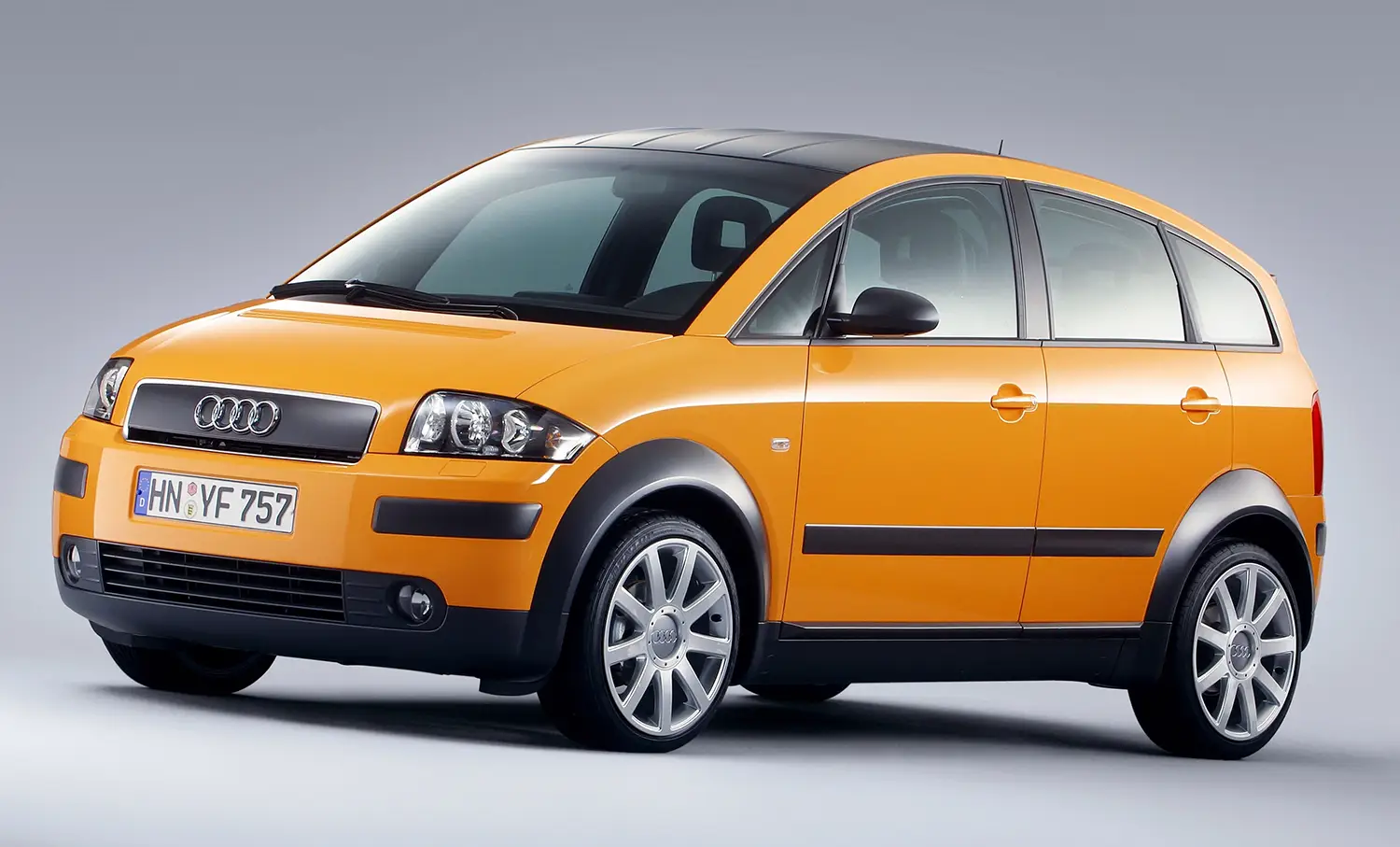
From Concept to Series Production
Two concept studies previewed the final design: the “Light Green” two-door and “Light Blue” three-door variant with a retractable sunroof. Public opinion was mixed, reflecting the progressive nature of the design. After extensive testing, Audi approved series production in November 1997, keeping to an ambitious timeline for a premiere at the 1999 IAA Frankfurt Motor Show.
Lightweight Aluminum Construction
The Audi A2 was the first compact car in recent history to feature a full aluminum body. Weighing just 153 kilograms for the body shell, the design achieved roughly 60 percent of a steel equivalent. Despite its compact dimensions of 3.83 meters in length and 1.67 meters in width, the interior offered surprising space for passengers. Neckarsulm became the dedicated production site, with new facilities inaugurated on November 15, 1999.
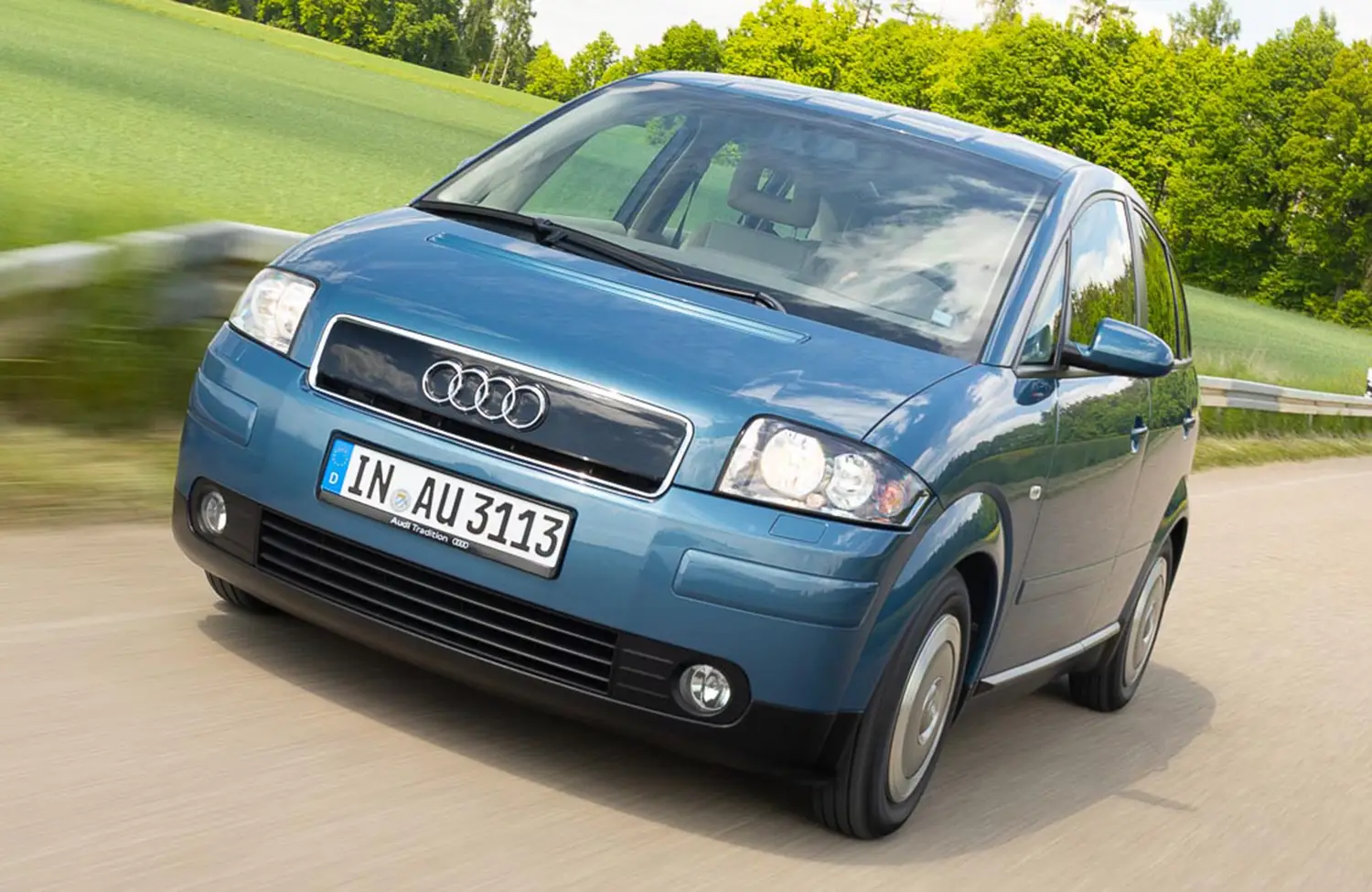
Engine Options and Fuel Efficiency
Audi offered five engine variants over the A2’s lifespan. Gasoline models included inline-four engines paired with a five-speed manual, consuming 5.9 liters per 100 kilometers. Diesel models featured three-cylinder pump-nozzle direct injection engines. The groundbreaking 1.2 TDI delivered 61 horsepower while consuming just 2.99 liters per 100 kilometers, making it the world’s first four-door three-liter car.
Performance and Aerodynamics
The 1.2 TDI achieved a drag coefficient of 0.25 through careful weight reduction, partial closure of cool-air intakes, and flow-optimized tires. Aluminum forged wheels, weight-optimized rear seats, and additional underbody paneling enhanced efficiency. Later, the 1.6 FSI engine offered 110 horsepower, pushing the A2 past 200 km/h, and further cementing its status as an innovative compact.
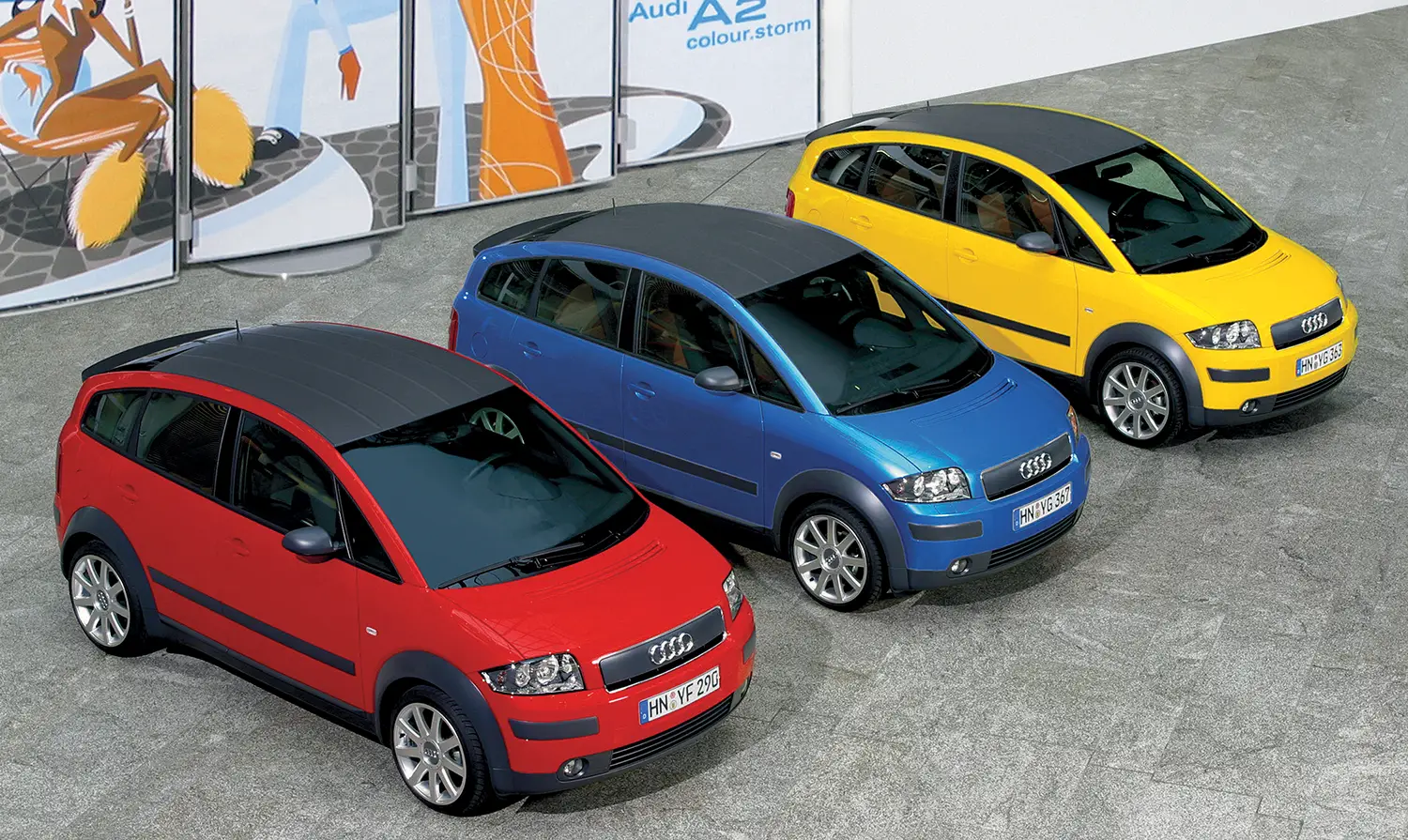
Special Editions and Design Highlights
In 2003, Audi launched the “colour.storm” edition with vibrant paint options like Imola Yellow, Misano Red, Sprint Blue, and Papaya Orange. Matte black accents and coordinated interiors made the cars stand out. Optional extras allowed buyers to personalize engines and trims, excluding the 1.2 TDI.
Production Numbers and Market Impact
From 2000 to 2005, Audi produced 176,377 A2 units. The breakdown includes 6,555 units of the 1.2 TDI, 81,649 of the 1.4, 69,676 of the 1.4 TDI, 7,416 of the 1.4 TDI 90 PS, and 11,081 of the 1.6 FSI. Although production ended due to modest sales, the A2 maintains a loyal following as a reliable and efficient modern classic.
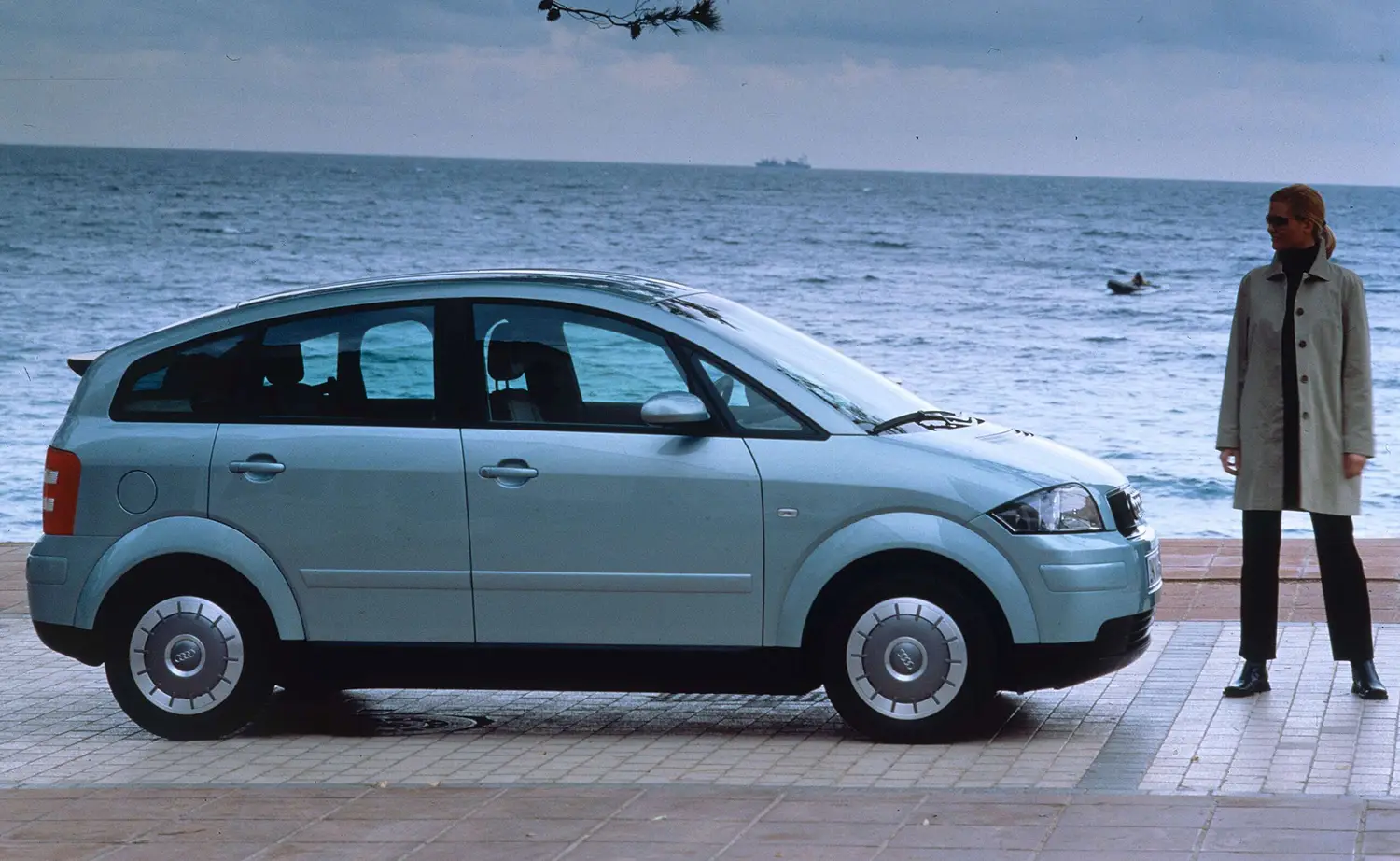
Lasting Legacy
The Audi A2 remains notable for its engineering achievements, aerodynamic efficiency, and innovative lightweight construction. Drivers today appreciate it for daily usability, stable value, and its forward-thinking approach to compact car design. Despite polarizing opinions at launch, the A2 continues to be recognized as a milestone in Audi’s history.
Disclaimer: Content on this site is for informational purposes only. Vehicle specs, pricing, and availability may change. Always verify details with official sources before making decisions. Opinions are those of the authors.
Source: Audi
